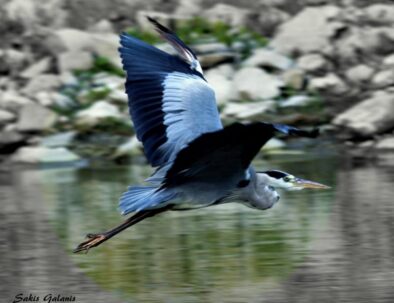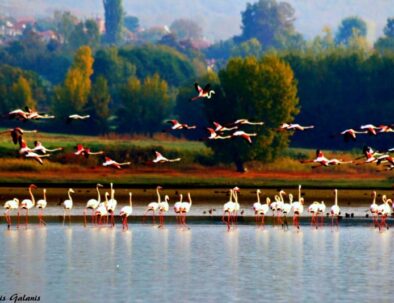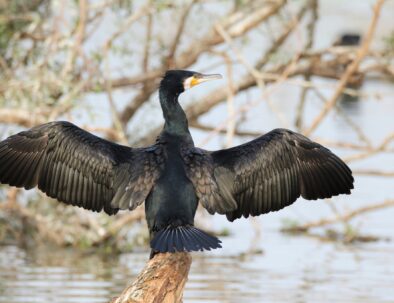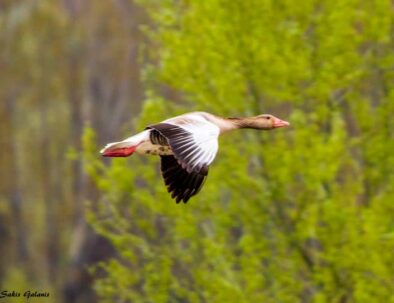
Lake Kerkini
Lake Kerkini: A Paradise of Biodiversity
Lake Kerkini is located in the northwestern part of the Regional Unit of Serres and is one of the most important wetlands in Greece. It was created artificially in 1932 with the construction of a dam on the Strymonas River, but quickly developed into a natural ecosystem of great importance.
Geography and Flora:
The lake is surrounded by the Beles mountain range to the north and hills to the south. The area is covered by extensive forests, grasslands and arable land, offering ideal habitats for many plant species.
Fauna
Kerkini is home to more than 300 species of birds, making it one of the most important birdwatching destinations in Europe. Rare and protected species such as storks, silver pelicans and cormorants are found here. In addition, the lake is home to amphibians, fish and mammals such as otters and buffalo.
Anthropogenic Influence
Despite its artificial origin, Lake Kerkini has evolved into a balanced wetland with significant ecological value. Local communities exploit the area for soft tourism development, fishing and agriculture, while maintaining the environmental integrity of the site.
Activities
Kerkini is home to more than 300 species of birds, making it one of the most important birdwatching destinations in Europe. Rare and protected species such as storks, silver pelicans and cormorants are found here. In addition, the lake is home to amphibians, fish and mammals such as otters and buffalo.
Birds of Lake Kerkini
Lake Kerkini is a sanctuary for over 300 bird species, making it one of the most significant birdwatching sites in Europe. The lake is a vital habitat for numerous rare and endangered species, such as the Dalmatian pelican, the great white pelican, and the pygmy cormorant. During migration seasons, thousands of birds stop here, including flamingos, storks, and various species of herons. The rich wetlands, reed beds, and surrounding forests provide ideal nesting and feeding grounds, contributing to the remarkable biodiversity of the area.
Dalmatian pelicans
"On Lake Kerkini, Greece, this recovery is particularly noticeable, especially since the implementation of artificial platforms by the local management body contributed to the expanding of their breeding range."

Migration Seasons
Lake Kerkini is a vital stopover for numerous migratory birds, with species arriving and departing throughout the year.



